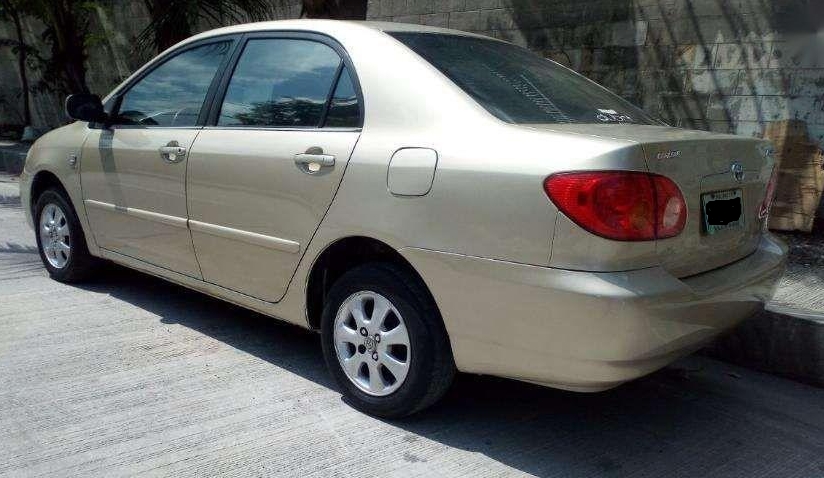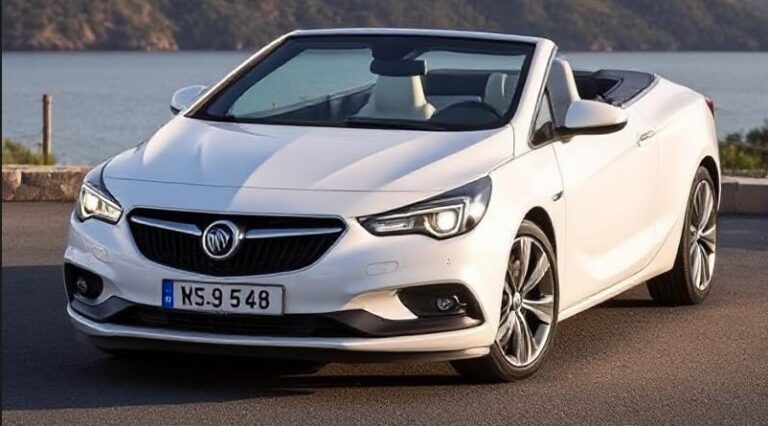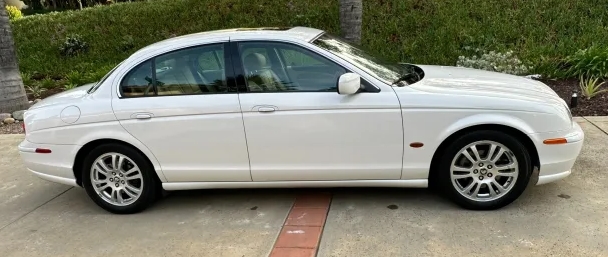From Workhorse to World-Class: The Four-Generation Evolution of the Toyota Vios
In the bustling cityscapes of Southeast Asia and beyond, one nameplate has become synonymous with reliability, efficiency, and ubiquity: the Toyota Vios. More than just a car, the Vios is a cultural touchstone—the first family sedan, the dependable taxi, the sensible daily driver. Yet, the sleek, feature-packed model in showrooms today is a world away from its humble origins. This is the story of its evolution, a journey that mirrors the growing aspirations and technological advancements of the markets it was built to serve.
The Vios, whose name is derived from the Latin word meaning “to move forward,” was designed as a key component of Toyota’s “Innovative International Multi-purpose Vehicle” (IMV) project, aimed at creating vehicles specifically for emerging markets. It was engineered to be the spiritual successor to the Tercel and its regional replacement, the Soluna, inheriting their mantle of affordability and unbreakable mechanicals while adding a dose of modern comfort and style.
The First Generation (XP40): The Reliable Progenitor (2002-2007)
Launched in 2002, the first-generation Vios (codename XP40) arrived at a time when its target markets were recovering and growing. Its design philosophy was simple: create a compact, fuel-efficient sedan that felt more substantial than its price tag suggested. Often affectionately called the “Baby Camry,” its rounded, inoffensive styling and well-proportioned body gave it a sense of understated quality.
Under the hood lay the heart of its burgeoning legend: the 1.5-liter 1NZ-FE engine with VVT-i (Variable Valve Timing with intelligence). This powerplant was a masterstroke, delivering a perfect balance of adequate performance (around 107 horsepower) and exceptional fuel economy. For certain markets like the Philippines, a smaller 1.3-liter 2NZ-FE engine was also offered as a more economical entry point. These engines were paired with either a slick 5-speed manual or a dependable 4-speed automatic transmission.
The interior was a testament to Toyota’s pragmatic brilliance. While plastics were hard, the fit and finish were excellent, ensuring a rattle-free experience for years. The centrally-mounted instrument cluster, a quirky design choice borrowed from its Yaris sibling, was intended to reduce the driver’s eye movement from the road.
.
NO MORE dead batteries with this:

.
Trim levels were straightforward and catered to different budget levels:
- J: The base model, often featuring steel wheels with hubcaps, manual windows and mirrors, and no radio as standard in its earliest forms. It was the quintessential workhorse.
- E: The mid-range, volume-selling trim. It typically added power windows, central locking, and body-colored mirrors and door handles, making it a more comfortable daily driver.
- G: The top-of-the-line variant. This model came equipped with all the features of the E, plus alloy wheels, fog lamps, chrome accents, and a superior audio system. It often included safety features like ABS (Anti-lock Braking System) and driver/passenger airbags, which were options on lower trims.
A rare and exciting outlier was the Vios Turbo, offered exclusively in Thailand. This factory-sanctioned, limited-edition model featured a turbocharger bolted to the 1NZ-FE engine, boosting power significantly and adding a sporty body kit, making it a cult classic among enthusiasts. The XP40 laid the foundation, establishing the Vios name as a benchmark for reliability and value.
The Second Generation (XP90): Sharpening the Edges (2007-2013)
By 2007, the market had matured, and buyers demanded more style and refinement. Toyota responded with the second-generation Vios (XP90). Built on a new platform shared with the Yaris, its design was a significant departure from the original. The “Baby Camry” look was replaced by a sharper, more aerodynamic silhouette with a distinctive character line running along its sides. It looked more dynamic and youthful.
The powertrain was largely a carryover, retaining the highly-regarded 1.5-liter 1NZ-FE engine and the 4-speed automatic/5-speed manual transmissions. Toyota’s philosophy was clear: if it isn’t broken, don’t fix it. The focus was instead on improving ride comfort, reducing cabin noise, and enhancing the overall driving experience.
Inside, the XP90 continued with the centrally-mounted instrument cluster, a feature that remained polarizing among drivers. However, the cabin design was more sophisticated, with a greater sense of space and improved ergonomics. A flat rear floor, free of a transmission tunnel intrusion, was a key selling point, offering superior legroom for the middle passenger.
The trim hierarchy was refined and expanded to appeal to a wider audience:
- J: Remained the entry-level choice, perfect for fleet operators and budget-conscious buyers.
- E: Continued as the popular mid-tier option, balancing features and cost effectively.
- G: The premium trim, now with features like automatic climate control and steering wheel-mounted audio controls in some markets.
- S: A new, sporty-looking grade that sat atop the G. It featured a full body kit, smoked headlamps, and unique alloy wheels but retained the standard engine.
- TRD Sportivo: Taking the sporty concept further, Toyota Racing Development (TRD) offered a TRD Sportivo edition. This was primarily an aesthetic package with aggressive bumpers, side skirts, a rear spoiler, TRD-branded wheels, and sometimes sportier suspension tuning.
The XP90 Vios cemented Toyota’s dominance in the subcompact sedan segment. Its blend of proven mechanicals and updated styling made it an unstoppable force, becoming the best-selling car in several Southeast Asian nations.
The Third Generation (XP150): The Era of Modernization (2013-2022)
The third-generation Vios (XP150) represented the most dramatic leap in the model’s history, not just in one go, but through a series of significant updates over its long nine-year production run.
Phase 1 (2013-2017): A Visual Revolution The initial 2013 launch model was a design bombshell. It adopted Toyota’s aggressive “Keen Look” design language, featuring sharp, angular lines, a bold chrome grille that flowed into the headlights, and a much more imposing road presence. It finally shed its conservative image for one that was stylish and desirable. The interior was also completely overhauled, mercifully returning the instrument cluster to its rightful place in front of the driver and featuring a more premium, layered dashboard design.
Initially, however, the underpinnings were familiar. It launched with the same venerable 1NZ-FE engine and 4-speed automatic transmission. While reliable, this powertrain was beginning to feel dated compared to competitors offering more advanced engines and CVTs.
Phase 2 (2017-2020): The Technical Leap The 2017 facelift was the most important update in the Vios’s history. Toyota finally addressed the aging powertrain by introducing the new 2NR-FE 1.5-liter engine with Dual VVT-i. This engine was more refined and, crucially, more efficient. Even more significant was the retirement of the 4-speed automatic in favor of a modern Continuously Variable Transmission (CVT) with a 7-speed sequential shift mode. This combination transformed the driving experience, offering smoother acceleration and a substantial improvement in fuel economy.
This update also brought a monumental shift in safety. Toyota standardized a comprehensive safety suite across most of the lineup in many markets, including:
- 7 Airbags (dual front, side, curtain, and driver’s knee)
- Vehicle Stability Control (VSC)
- Traction Control (TC)
- Hill-Start Assist Control (HAC)
- ABS with Electronic Brakeforce Distribution (EBD) and Brake Assist (BA)
This move democratized safety and set a new benchmark for the entire segment.
Phase 3 (2020-2022): The Tech and Safety Apex The final facelift for the XP150 brought its aesthetics in line with the contemporary Toyota family look, featuring a large, aggressive lower grille similar to the Camry and Corolla. The focus was on technology and advanced safety. Infotainment systems were upgraded with Apple CarPlay and Android Auto connectivity. Most importantly, top-tier models were now available with Toyota Safety Sense (TSS), an active safety suite including a Pre-Collision System (PCS) and Lane Departure Alert (LDA). This brought flagship-level driver aids to an entry-level sedan.
Trim levels throughout the XP150’s life cycle generally followed the J, E, G, and TRD Sportivo structure, with higher trims like the G-Prime or XE being introduced in specific markets to fill niche price points.
The Fourth Generation (AC100): A New Foundation (2022-Present)
Launched in 2022, the fourth-generation Vios (codename AC100) marks a seismic shift. It is no longer based on a Toyota platform but has moved to the Daihatsu New Global Architecture (DNGA), a platform shared with models like the Avanza and Raize. This change allowed for a complete ground-up redesign.
The new Vios sports a sleek, fastback-like silhouette that makes it look more like a junior grand tourer than a traditional three-box sedan. The design is sophisticated and upmarket, challenging the perception of what a subcompact car should look like.
The interior is a revelation, with a driver-focused cockpit, a large floating touchscreen infotainment system, a digital instrument cluster on higher trims, and a significant improvement in material quality. It is packed with modern conveniences like an electronic parking brake with auto-hold, ambient lighting, and rear air-conditioning vents.
The powertrain in most markets is the refined 2NR-FE engine paired with the D-CVT (Dual-Mode CVT), which uses a combination of belt and gear drive for improved efficiency and responsiveness. In eco-car markets like Thailand, where it is badged as the Yaris Ativ, it utilizes a smaller, highly efficient 1.2-liter engine.
The trim lineup has been updated to reflect a new marketing direction:
- J/E: Entry-level models that are still well-equipped.
- G/V: High-spec variants loaded with technology and comfort features.
- GR-S (Gazoo Racing Sport): Replacing TRD Sportivo, the GR-S is the new flagship sporting model. It features an exclusive mesh grille, aggressive aero kits, unique 17-inch wheels, sport-tuned suspension, and a cabin adorned with GR branding and synthetic leather/suede seats. It represents the pinnacle of Vios performance and style.
Advanced safety remains a priority, with the latest generation of Toyota Safety Sense offering more features, including Adaptive Cruise Control on top-end models.
Conclusion: The Constant Evolution
From its genesis as a simple, dependable appliance, the Toyota Vios has meticulously evolved over two decades. Each generation has been a direct response to the pulse of its market—from providing basic, reliable transport with the XP40, to adding style and comfort with the XP90, to making a quantum leap in safety and technology with the XP150, and finally, to redefining the segment’s expectations of design and sophistication with the new AC100.
The Vios has never forgotten its core promise of quality, durability, and reliability. But it has brilliantly layered on new attributes—style, safety, technology, and driving pleasure—to not only retain its crown but to expand its kingdom. It is a testament to Toyota’s ability to listen, adapt, and consistently move forward.







